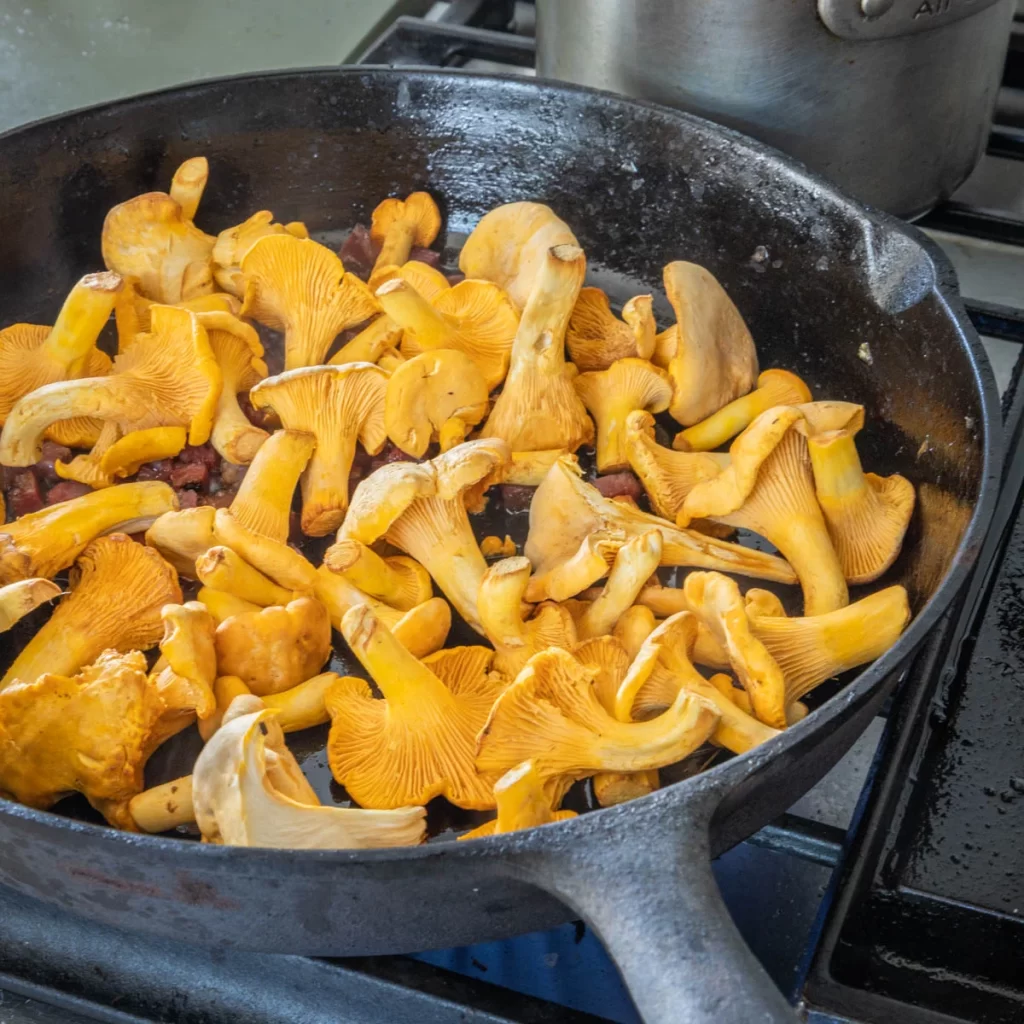Introduction to Chanterelles
Chanterelle mushrooms, scientifically known as Cantharellus cibarius, are a highly sought-after delicacy in the culinary world. Known for their vibrant yellow-orange color and unique flavor profile, they possess a combination of peppery, buttery, and slightly fruity notes. These mushrooms are not just delicious; they are also packed with nutrients, making them a healthy addition to various dishes.
Nutritional Benefits
Chanterelles are low in calories yet rich in essential nutrients. A one-cup serving (approximately 54 grams) provides:
- Calories: 17
- Protein: 1 gram
- Carbohydrates: 4 grams
- Fat: 0.3 grams
- Fiber: 2 grams
- Copper: 21% of Daily Value (DV)
- Niacin: 14% of DV
- Vitamin D: 14% of DV
These mushrooms are particularly noted for their high water content (about 90%), which makes them ideal for various cooking methods that enhance their flavors while reducing moisture.
Cooking Chanterelles
Chanterelles can be prepared in numerous ways, but they are best enjoyed cooked rather than raw due to their complex flavors that develop during cooking. Here are some popular methods:
Sautéing
Sautéing is one of the most common methods for cooking chanterelles. This technique helps to concentrate their flavors and gives them a delightful texture.Ingredients:
- 1 pound (454 grams) fresh chanterelles
- 1 tablespoon olive oil
- 1 tablespoon butter
- 1 minced shallot
- 2-3 cloves garlic, minced
- Salt and pepper to taste
Instructions:
- Clean the chanterelles thoroughly under cool running water to remove any dirt or sand.
- Heat olive oil in a large pan over medium-high heat.
- Add minced shallots and sauté until translucent.
- Stir in minced garlic and cook for an additional minute.
- Remove the garlic and shallot mixture from the pan.
- In the same pan, add the cleaned chanterelles and sauté for about 4–5 minutes until they start to soften.
- Add butter and cook for another 2–3 minutes.
- Mix in the garlic and shallots, season with salt and pepper, and serve hot.
Dry Sautéing
Dry sautéing is another effective method to enhance the flavor of chanterelles while reducing excess moisture.Instructions:
- Place clean chanterelles in a hot pan without any oil or butter.
- Stir constantly for about 10–15 minutes until they release their moisture and become tender.
- Once cooked, add butter, salt, and pepper to taste.
Cream Sauces
Chanterelles pair beautifully with creamy sauces, making them an excellent addition to pasta dishes or risottos.Basic Cream Sauce Recipe:
- Sauté chanterelles as described above.
- Add heavy cream (about one cup) to the pan along with salt, pepper, and any desired herbs (like thyme).
- Simmer until the sauce thickens slightly.
- Toss with cooked pasta or rice for a rich dish.
Chanterelle Chips
For a unique snack or garnish, you can make chanty chips.Instructions:
- Slice chanterelles thinly using a mandoline.
- Brush with melted butter or oil and sprinkle with salt.
- Broil until crispy, monitoring closely to prevent burning.
Storage Tips
Chanterelles can be stored fresh in the refrigerator for up to a week. For longer storage, consider drying or freezing them:
- Drying: Clean and slice chanterelles before placing them in a dehydrator or oven at low heat until completely dry.
- Freezing: Clean and sauté briefly before freezing in airtight containers.
Frequently Asked Questions (FAQ)
How do I clean chanterelle mushrooms?
To clean chanterelles, rinse them gently under cool running water to remove dirt, then pat dry with a towel. Avoid soaking them as they can absorb water.
Can I eat chanterelles raw?
While technically safe to eat raw, chanterelles are best enjoyed cooked as this enhances their flavor and texture.
What dishes can I make with chanterelles?
Chanterelles can be used in various dishes including pasta sauces, soups, risottos, or simply sautéed as a side dish.
Are there any health benefits associated with eating chanterelles?
Yes! Chanterelles are low in calories but rich in vitamins D, A, E, several B vitamins, copper, niacin, and antioxidants which contribute to overall health.
Where can I find chanterelle mushrooms?
Chanterelles grow wild in forests during late summer to early fall but can also be found at farmers’ markets or specialty grocery stores.
Conclusion
Chanterelle mushrooms are not only a culinary delight but also offer numerous health benefits. Their versatility allows them to shine in various dishes—from simple sautés to rich cream sauces—making them a valuable ingredient in any kitchen.
| Nutritional Value per Cup | Amount |
|---|---|
| Calories | 17 |
| Protein | 1 g |
| Carbohydrates | 4 g |
| Fat | 0.3 g |
| Fiber | 2 g |
| Copper | 21% DV |
| Niacin | 14% DV |
| Vitamin D | 14% DV |
For more detailed information on chanterelle mushrooms, you can refer to Wikipedia.



